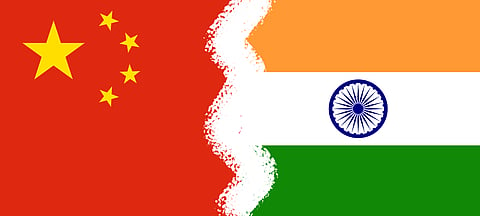

After the termination of colonialism, India and China became pioneers in creating a new world order. The early stage was marked by a spirit of oneness as both nations were born out of the bondage of imperialism. In 1950, India was one of the earliest countries to officially recognize the People’s Republic of China under its Communist Party Chairman Mao Zedong.
Nevertheless, this first sense of camaraderie soon faded and the spectre of boundary issues started to rear its head in bilateral relations. The border conflict of 1962 which led to a short but fierce war left its deep footprints on the diplomacy history of both nations. The unanswered border question is nevertheless a chronic thorn that regularly erupts and challenges the strength of diplomatic avenues.
In the late twentieth century, there was a subtle change in India-China relations. Economic pragmatism emerged to play a critical role in dictating the nature of relations between both countries as they observed that there were gains from cooperation. The visit of then Prime Minister Rajiv Gandhi to China in 1988 represented a milestone when CBM was adopted and Beijing again faced with the need for peaceful settlement followed this course.
The Twenty First Century
The advent of the 21st century ushered in an epoch of economic globalization and thus created a new synergy for Indo-China cooperation. Armed with almost 40% of the world’s population, these two nations transformed into economic juggernauts as trade and investment became pillars nailing their interaction. Bilateral trade volumes surged, and institutions such as the Annual India-China Strategic Economic Dialogue were created to nurture economic cooperation.
Nevertheless, despite this blossoming of economic relations, geopolitical complications continued to mould the outline of that relationship. The strategic rivalry between India and China found its reflection in the conditions of regional power balance, where these states competed for influence in South Asia and the Indian Ocean region. The Belt and Road Initiative (BRI), a gigantic infrastructure project masterminded by China, turned into the centre of contention as India expressed concerns regarding its geopolitical impact and sovereignty of neighbours.
The 2017 Doklam standoff served as a turning point in modern India-China relations. As the conflicting armies of India and China stood off in the Doklam plateau, its demarcation point, a protracted standoff followed. The event revealed the vulnerability of such a status quo and emphasized strong diplomatic mechanisms to prevent tense eruptions along the contested border.
COVID-19
The COVID-19 pandemic has created a seismic shift in the geopolitical landscape of planet Earth in 2020. The virus that triggered the pandemic added a new dimension to India-China relations as accusations and counteraccusation emanated on either side of origin and treatment measures. In this context, the Galwan Valley incident in June 2020 which led to casualties on both sides took place leaving bilateral relations at their lowest point.
The repercussions of the Galwan Valley incident were deep, prompting greater anti-China sentiments in India and a shift from diplomatic to economic relations with China. India attempted to counter Chinese influence, through banning of apps from China and controls on investments; rather emphasizing indigenous self reliance in strategic sectors. The battle also caused the rebalancing of India’s strategic accounting system as the country tried to reinforce its partnership with like-minded partners within Indo Pacific.
However, as we move towards 2024 India-China relations are at a critical point balancing between geopolitical dilemmas of trade dependencies and past resentments. The way ahead requires a delicate balance between pragmatism, assertiveness and keeping away from long disputed issues civilly. The two nations not only shoulder the duty of managing their bilateral relationship, but also to promote regional stability and prosperity in Asia.
Conclusion
At present, in the age of global integration, India and China should tend to understand coexistence with collaboration is important. The issues that characterize their relation – territorial disputes, economic rivalry and geopolitical posing- require tactile conversation, diplomatic refinement and a common pledge to the tenants of international law. Having been torch-bearers of the ancient civilizations, both nations are culturally endowed to help lay a foundation upon which understanding and goodwill can be built.
The course of India-China relations from 1947 to 2024 can be depicted as a tale that reflects endurance, adjustment and relentless pursuit for balance. As history has passed down a burden of challenges, it also allows for forgiveness, collaboration and mutual development. Heavy responsibility lies on the shoulders of Indian leaders and Chinese leadership to navigate through this field with wisdom and foresight towards a future that is cooperation, stability, shared goodness.
